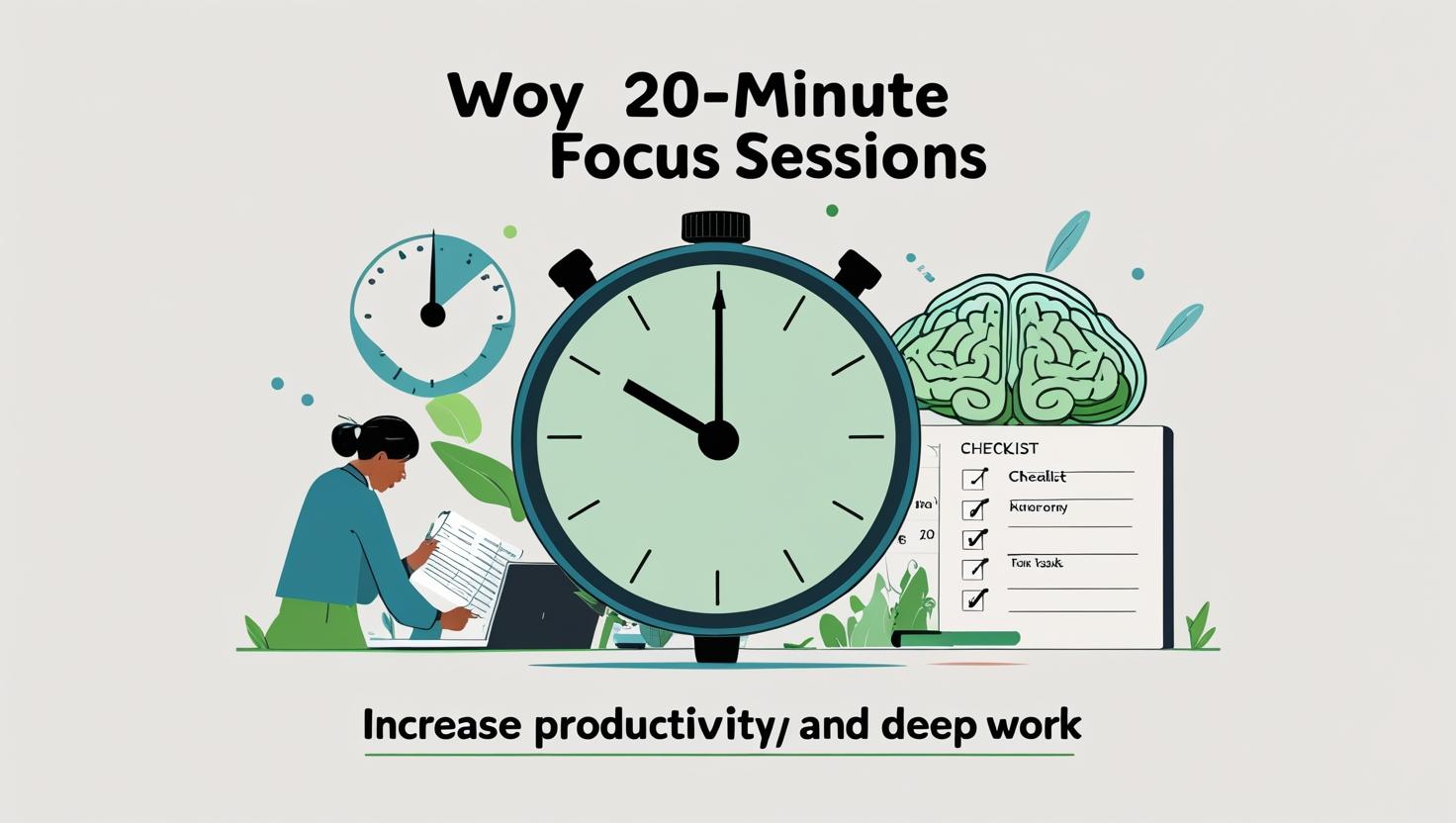20-Minute Focus Sessions: The Ideal Timer Duration for Deep Work?

20-Minute Focus Sessions: The Ideal Timer Duration for Deep Work?
Every organizer knows that keeping attention sharp during events, conferences, and webinars is a challenge. Speakers can overrun their time, audiences lose focus, and schedules start slipping. Research on productivity and deep work suggests that 20 minutes timers, or setting a timer in 20 minutes, may strike the perfect balance between focus and flexibility. This timing creates a rhythm that helps professionals dive deep into a task, stay engaged, and then resurface without burning out.
For event organizers, the same principle applies. A 20 minutes timer can serve as a structured tool to keep speaker sessions concise, panel discussions engaging, and workshops productive. With platforms like Let’s Time IT, you can discreetly set countdowns, synchronize them across multiple sessions, and even control them remotely, ensuring that every session runs on time.
Why 20 Minutes Works for Deep Work and Events
- Cognitive Sweet Spot: Studies suggest attention wanes after 20 minutes, making it an ideal chunk of time for focus before distraction creeps in.
- Speaker-Friendly: For keynote presenters, a timer minutes 20 provides enough space to cover a focused theme without overwhelming the audience.
- Event Flow: Keeping sessions in 20-minute slots makes it easier for organizers to keep the agenda on track and prevent overruns.
The Science Behind Timer-Driven Focus
- Pomodoro Technique Alternative: Traditionally, productivity experts suggest 25-minute sprints. However, reducing it slightly to 20 minutes makes transitions smoother in events and meetings.
- Audience Retention: People absorb and recall information better in shorter bursts. A 20 minutes timer helps speakers adapt their delivery for maximum impact.
- Energy Cycles: Aligning with natural attention spans means fewer energy dips in conferences or webinars.
Remote-Controlled Countdown Timer: A Game Changer
For organizers managing complex events, technology is essential. A remote-controlled countdown timer allows you to:
- Start or stop sessions discreetly from backstage.
- Align multiple rooms or parallel sessions.
- Avoid manual resets or interruptions that can distract from the flow.
With Let’s Time IT, timers can be controlled from a central dashboard, scheduled in advance, and synced across different sessions perfect for multi-track conferences.
Countdown Timer for AddEvent: Streamlining Session Management
When attendees add sessions to their calendars through platforms like AddEvent, syncing a countdown timer for addevent ensures they know exactly when a session starts and ends. This creates consistency between pre-event planning and live execution.
Practical Applications for Organizers
1. Keynotes and Panels
- Set a timer in 20 minutes for short keynotes to keep talks crisp.
- Use visible timers on stage so speakers pace themselves.
2. Breakout Workshops
- Assign timer minutes 20 intervals for collaborative tasks.
- Alert groups discreetly when time is almost up.
3. Webinars and Virtual Events
- Keep presentations within 20-minute segments.
- Integrate timers across virtual platforms so remote participants stay aligned.
Why 20-Minute Timers Fit Modern Event Culture
Today’s audiences demand efficiency. Long-winded speeches or dragged-out webinars rarely hold attention. Instead, sessions structured around 20 minutes timer blocks:
- Increase satisfaction rates.
- Ensure speakers stay sharp.
- Provide delegates with digestible learning moments.
This aligns with the evolving event landscape where micro-sessions, snackable learning, and hybrid formats dominate.
Case Example: Conference Session Flow
Imagine a tech conference with 10 breakout tracks. Instead of struggling with inconsistent session lengths, organizers use Let’s Time IT to schedule every breakout in 20 minutes timers. Speakers stay concise, audience members move smoothly between sessions, and the event runs precisely on schedule.
Balancing Flexibility and Structure
Of course, not every session must be exactly 20 minutes. Longer keynotes can still benefit from sub-dividing into 20-minute focus blocks. For example, a 60-minute session could be structured as:
- 20 minutes presentation
- 20 minutes Q&A
- 20 minutes networking or discussion
Conclusion: 20 Minutes for Deep Focus and Event Success
Whether you’re an executive preparing a keynote, a marketing team running a webinar, or an operations team ensuring events stay punctual, the 20 minutes timer approach provides a powerful structure. Setting a timer in 20 minutes isn’t just about productivity; it’s about creating focus, maintaining energy, and delivering experiences that respect both time and attention.
With Let’s Time IT, you can discreetly schedule timers, control them remotely.